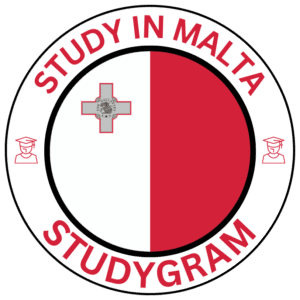
The University of Malta recently hosted a delegation of professors from China’s leading agricultural and marine research institutions to discuss joint efforts under the NASDAC project. This collaboration, funded by Xjenza Malta, aims to transform microalgae science into scalable pharmaceutical production, with a particular focus on a novel peptide antibiotic that could both treat infections and offer anti‑tumor and osteogenic benefits. The meetings underscored the global potential of environmentally sustainable drug development and opened doors for deeper research ties between the two nations.
Universities Behind the Project
China Agricultural University, Beijing
China Agricultural University (CAU) is known for cutting‑edge research on plant‑based bioproducts and microbial biochemistry. Professor Zhihui Hao and his team have pioneered the extraction of bioactive peptides from algae, positioning CAU as a leader in marine biotechnology.
Oceanic University of China, Qingdao
Situated on China’s eastern coast, the Oceanic University of China (OUC) specializes in marine science and aquaculture. Professor Zhenhui Liu’s expertise lies in optimizing algal growth in large‑scale photobioreactors, ensuring higher yields of target peptides.
NASDAC Project Objectives
The New Sustainable Antibacterial Development & Advanced Culture (NASDAC) project blends microbiology, chemical engineering, and environmental science to create a cost‑effective pipeline for antibiotic peptides. Its primary objectives include:
- Engineering microalgae strains capable of producing high‑titer peptide antibiotics.
- Developing scalable photobioreactor designs suitable for Mediterranean climates.
- Assessing the anti‑tumor efficacy of the produced peptides in vitro.
- Exploring bone‑regenerative properties for osteoporosis treatment.
- Capturing CO₂ during algal photosynthesis to contribute to climate mitigation.
Microalgae as a Platform for Affordable Antibiotics
Bioreactor Technologies and CO₂ Capture
Microalgal cultivation thrives on sunlight and seawater—resources that are abundant in Malta and many other regions. By situating large‑scale photobioreactors along coastal areas, the project captures atmospheric CO₂ and reduces the platform’s carbon footprint. The technology stack includes transparent tubular reactors, automated nutrient monitoring systems, and integrated downstream processing units for peptide isolation.
Potential Anti‑Tumor and Bone‑Building Effects
Early laboratory tests reveal that the peptide derived from two alga species in the NX‑ALPHA strain weakens cancer cell viability by disrupting cell membrane integrity and inducing apoptosis. Concurrent studies focus on the peptide’s ability to stimulate osteoblast proliferation, offering a dual therapeutic avenue for patients suffering from bone diseases such as osteoporosis.
Visit Highlights at the University of Malta
Engagement with Local Researchers
Prof. Pierre Schembri‑Wismayer, the senior post‑doc leading the local arm of NASDAC, welcomed the visiting scholars and outlined the Malta‑based research agenda. Professor Melissa Formasa and Dr. Lucienne Gatt shared recent findings on anti‑osteoporotic and anti‑cancer assays respectively, while Margherita Muscat and Dr. Marton Szoboszlay presented complementary data on marine biodiscovery.
Experience of Salina Nature Reserve
The delegation toured the Salina salt pans, where natural populations of Dunaliella salina thrive. The salt flats demonstrate how microalgae adapt to high salinity—an attribute crucial for engineered cultivation under stress conditions. Insights gained from this exposure informed the design of resilient algal strains for Maltese climates.
Progress and Future Directions
With initial milestones met—proof‑of‑concept fermentation and preliminary safety trials—the project’s group has already entered patent discussions. Future steps include:
- Securing additional funding through EU Horizon calls and Maltese research grants.
- Expanding pilot‑scale trials to assess production economics.
- Developing a regulatory roadmap for peptide antibiotic approval in the EU.
- Broadening the collaboration to include additional universities such as Tianjin University and the University of Bologna.
Impact on the Global Bio‑Pharma Industry
The implications of a low‑cost, sun‑powered antibiotic are profound. Traditional drug manufacturing consumes substantial energy and raw materials, contributing to high prices and limited access in low‑income regions. A microalgae‑based platform could:
- Lower production costs by 30‑40% compared to conventional fermentation.
- Reduce environmental footprints via CO₂ sequestration.
- Enable rapid scalability during pandemic outbreaks.
- Stimulate local economies through bioprocessing jobs and green infrastructure.
How You Can Engage with This Initiative
Students and professionals seeking to be part of this breakthrough can take several actionable steps:
- Explore graduate programmes in marine biotechnology, biochemical engineering, or environmental science at the University of Malta.
- Apply for research internships in the NASDAC project team.
- Attend upcoming seminars and workshops on photobioreactor design hosted by the Climate and Energy Institute.
- Contact Dr. Marton Szoboszlay or Prof. Pierre Schembri‑Wismayer to discuss potential collaborations.
- Follow the project’s developments on the university’s research portal and social media channels.
To stay informed, you can subscribe to updates or apply for a study program that aligns with your career goals.
Conclusion: A Sustainable Path Forward for Antibiotic Development
The joint visit between the University of Malta and China’s top research universities highlights the growing momentum behind environmentally responsible pharmaceutical innovation. Leveraging the Sun and sea without compromising safety or efficacy positions microalgae at the frontier of next‑generation antibiotics. By fostering international collaboration, investing in technology, and engaging local talent, the NASDAC project could reshape the landscape of drug production for the benefit of patients worldwide.
Partner with us to contribute to sustainable health solutions. Further details on study options are available through the university’s admissions portal.

